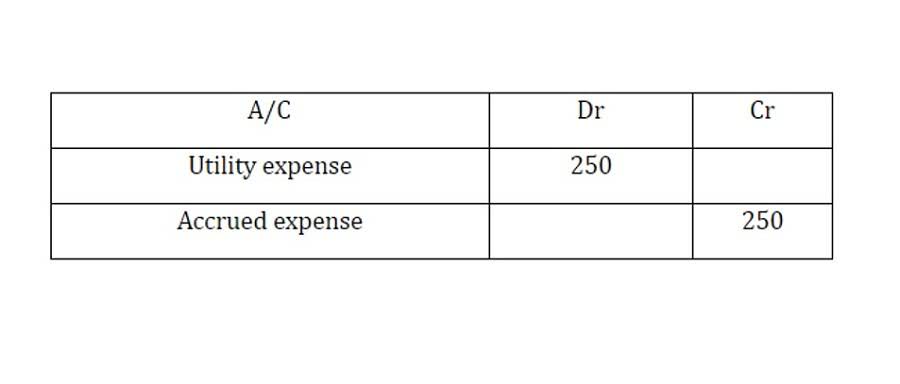Accounting Adjustments: Adjusting Expectations: Accounting for Outstanding Checks in Financial Statements

If the payee finally deposits the check after months of delay, you risk overdrawing your account and bouncing the check. Setting Up Overdraft ProtectionIf you do have an occasional check that goes unclaimed, setting up overdraft protection can prevent unexpected NSF fees. http://www.bkldanismanlik.com/bookkeeping/t-account-definition-example-recording-and-3/ Most banks offer various types of overdraft protection, such as linking a savings or a credit card to your checking account. Be sure to check the terms and conditions of these arrangements carefully. Understanding the consequences of having outstanding checks can be significant for businesses in various ways. In the United States, for instance, a check becomes stale after six months unless it carries an explicit “do not expire” clause.

What is a deposit in transit and why is it included in a bank reconciliation?
- The check register includes details such as the check number, date of issuance, payee, and the amount of the check.
- Investments are not FDIC-insured, are not a deposit, and may lose value.
- Understanding each step is essential for compliance and operational efficiency.
- Businesses that mishandle these kinds of accounting situations are effectively in violation of the law.
- For example, if a business writes a check for $1,000, their internal cash balance immediately decreases by that amount.
- An outstanding check doesn’t cost anything beyond the paper it’s printed on.
Depending on the jurisdiction, the account holder may be required to pay not only the original amount of the check but also additional legal fees and court costs. Legal action can be a time-consuming and expensive process, and it is best to avoid it by addressing outstanding checks promptly. This occurs when the account holder does not have enough money in their bank account to cover the amount written on the check. It may be unintentional, such as miscalculating available funds or forgetting to deposit money in time.

What does it mean when a check says “void after 90 days”?
After paying to the supplier, the accountant record debit assets and credit cash at bank. The company issue checks to settle the outstanding accounts payable with the supplier. After issuing the check, they will debit accounts payable and credit cash at the bank. When a check is written, it serves as a promise of payment from the issuer to the recipient. However, until the check is presented to the bank and the funds are transferred, it remains an oustanding checks outstanding check. In simpler terms, it is like a ticket that has been purchased but has not yet been used to enter the event.

What is Financial Coaching? How a Financial Coach Can Help You
Ensure accuracy and completeness in How to Run Payroll for Restaurants your reports to avoid penalties and state objections. Shaun Conrad is a Certified Public Accountant and CPA exam expert with a passion for teaching. After almost a decade of experience in public accounting, he created MyAccountingCourse.com to help people learn accounting & finance, pass the CPA exam, and start their career. The GlobalBanks editorial team comprises a group of subject-matter experts from across the banking world, including former bankers, analysts, investors, and entrepreneurs.

What Is a Credit Balance Refund Debit?
- Once identified, outstanding checks require specific handling within the bank reconciliation to determine the accurate cash balance.
- When the check reaches this expiration date, it is no longer valid, and the bank the check was written from may not honor the payment.
- Both viewpoints highlight the multifaceted nature of managing unreconciled transactions.
- Alternatively, you can contact your bank directly with the check number and ask them to confirm.
- This discrepancy can lead to a host of issues, from skewed financial statements to potential legal complications.
- A check is a financial instrument that authorizes a bank to transfer funds from the payor’s account to the payee’s account.
- An outstanding check refers to a check that has not yet been deposited or cashed by the recipient.
In fact, in most jurisdictions, an issued check will still be deposited by banks up to six months after the issue date. This is very different than most other instant payment methods, which include ACH transfers, wire transfers, and even cryptocurrency. The legal implications of unresolved outstanding checks are multifaceted and can have far-reaching consequences for businesses. It is crucial for companies to establish robust policies and procedures to monitor, follow up, and resolve any outstanding checks to avoid legal pitfalls and maintain financial integrity. This process involves aligning your bank statement with your records to ensure accuracy.
- These typically include bank service charges and interest earned on the bank account.
- One effective way to track outstanding checks is by creating a spreadsheet or using accounting software that allows individuals to record and monitor the checks that are yet to be resolved.
- To fully understand the concept of outstanding checks, let’s delve deeper into its and explanation.
- This process is part of the accounting cycle, allowing the company to accurately report cash, a current asset, on its balance sheet.

Leave a Reply